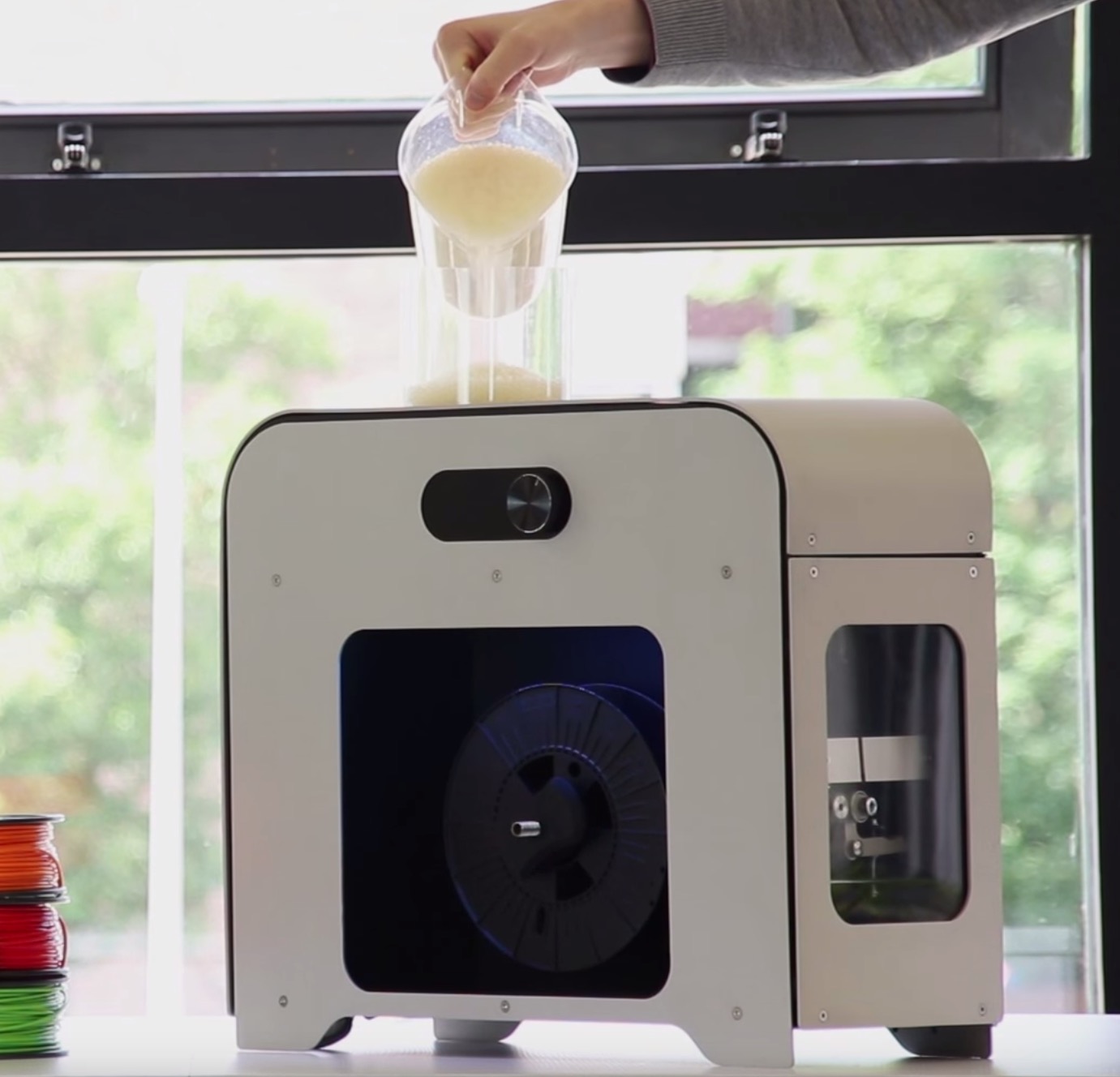Utrecht-based 3devo’s new filament extruder is now available on their crowdfunding page, but will it be practical?
Yes, we’ve been extremely skeptical of desktop filament recycling devices in the past, with good reason. If you’ve ever visited a real filament production facility, you will quickly notice very complex setups that control temperatures and pressures to a very fine degree. It’s that level of mechanical attention that enables top-level filament suppliers to produce consistently high-quality filament that you can rely on.
In the past we’ve seen multiple attempts at filament recycling, none of which appear to have survived. It’s not surprising: the problem is quite complex and early attempts failed miserably because they did not appreciate the difficulty of the problem. Some devices did not even include a means to spool the new filament, leaving it to spill on the floor in a spaghetti-like mess.
So we’re skeptical of 3devo’s new machine, obviously.
That said, it seems that the folks at 3devo do actually appreciate the complexity of the problem. Here’s a few signals that seem positive to us when looking at the new NEXT 1.0 filament extruder:
- They include an actual spooling mechanism designed for careful takeup of fresh filament
- The device and its process are enclosed, suggesting heat control is considered important
- The NEXT process includes three separate (and soon to be four) independent temperature zones that can be tuned to produce better quality filament
- The extruder screw is designed for high pressures and precise control
- There’s a sensor to detect and adjust for filament diameter variations – in REAL TIME!
All of this says to us – this machine just might work! 3devo’s Lucas van Leeuwen explains:
Filament extruders by themselves are anything but new, but what sets 3devo apart from the competition is the attention to detail and quality of the end product that has been invested in it. Unlike other filament extruders that generate poor-quality or inconsistent filament, the NEXT 1.0 is designed to extrude nothing short of a professional grade product, ensuring that the filament it extrudes can be perfectly wound onto the spool of a 3D printer for optimum results. All this from the comfort of your own desk.
If this machine truly works, then we can do two things. First, we can recycle all those failed prints by grinding them up and putting the chips into the NEXT 1.0. However, the machine does not include a grinding device, so you’re on your own for that.
Secondly, you can make your own filament compositions. This means you could theoretically buy plastic chips by the ton and mix them with other substances. Imagine making your own metal filament by mixing iron filings with PLA chips, for example. You can control the ratio to produce exactly the filament you need. Or, in a simpler manner, mix colors to produce any shade you require, or even change the color throughout the filament.
And so, now that you’re interested you may consider jetting off to their Kickstarter page where you can order a NEXT 1.0. As is customary on such campaigns, there are a variety of options to select from. However, as of this writing, the least expensive option is a €1,699 (USD$1,888) unit, and the most expensive is a future version equipped with four independent heating zones for €2,550 (USD$2,833).
Via Kickstarter and 3devo



